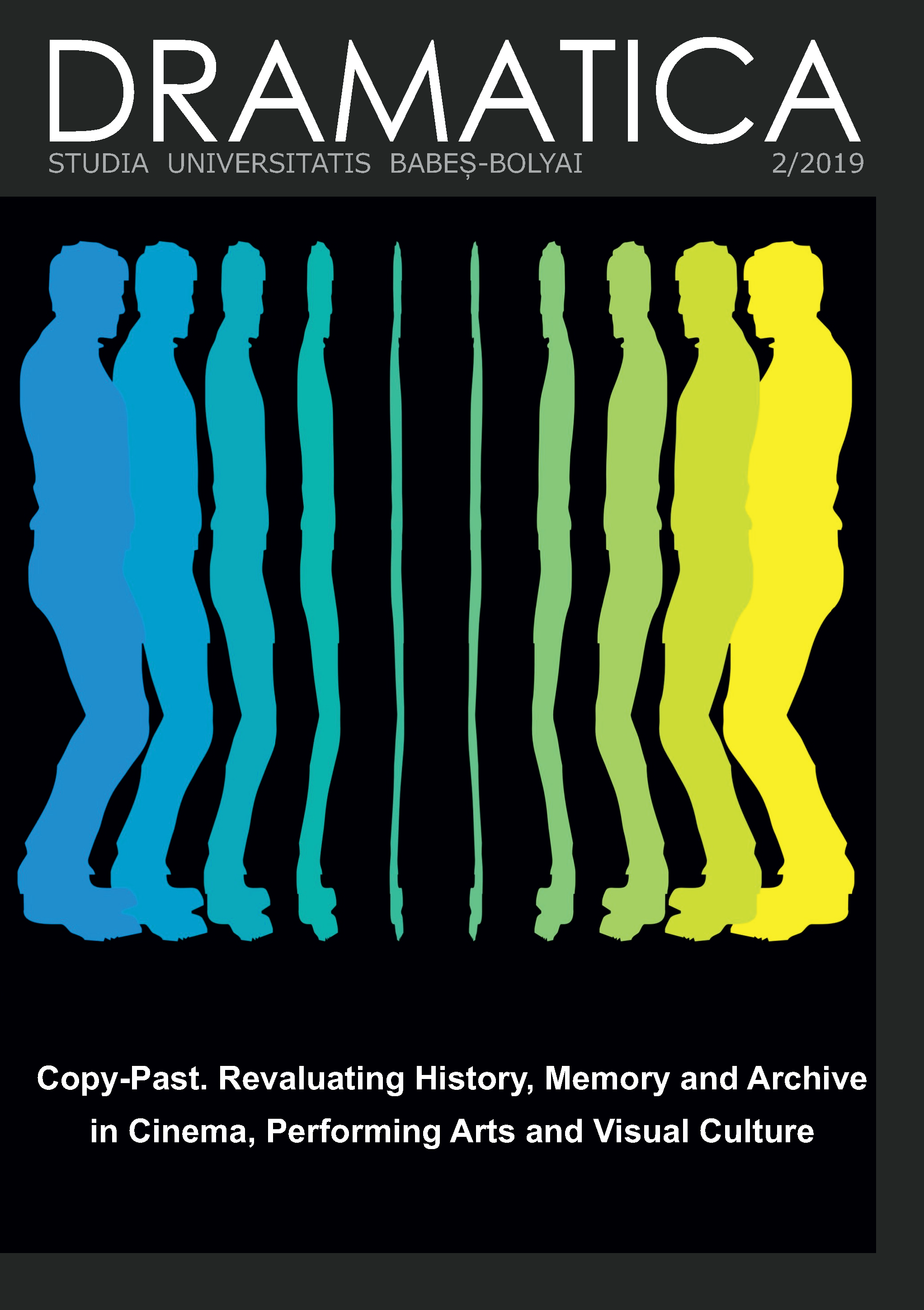Revisiting Great Soviet Symbols of World War II. The Young Guard Now and Then
DOI:
https://doi.org/10.24193/subbdrama.2019.2.05Keywords:
The Young Guard, heroicized death, ideological fictionalization, demystification, cult of Great Patriotic War, Soviet material cultureAbstract
The anti-fascist organization The Young Guard (Molodaya gvardia) in a Ukrainian town is the main focus of the present analysis, offering a glimpse into the Soviet myth-making and hero-making cycle. The article unveils the ideological and cultural patterns during the Soviet period, with a focus on A. Fadeyev’s novel and on the Soviet and post-Soviet film adaptations. The case of The Young Guard organization generated a frenzy of artistic representations throughout the Soviet Union, with various degrees of demystification during the post-Soviet period. The paper highlights the differences in describing and perceiving the heroic/heroicized death in various historical periods. Soviet propaganda traits and Socialist Realism patterns are revealed as part of the Soviet cult of World War II, as well as demystifying steps in approaching the myth of The Young Guard in post-Soviet filmic productions.
References
ALEXIEVICH, Svetlana. The Unwomanly Face of War. London: Penguin Books, 2017.
ALPERINA, Susanna. “Pervyi Kanal Pokazhet Dolgozhdannyi Serial Molodaaya Gvardia [The First Channel Broadcasts the Long-Awaited TV Series The Young Guard.” Rossiyskaya Gazeta, 2015. https://rg.ru/2015/04/30/teleprogramma-site.html.
BERDYAEV, Nikolas. The Russian Idea. New York: The Macmillan Company, 1948.
CLARK, Katerina. The Soviet Novel: History as Ritual. Bloomington and Indianapolis: Indiana University Press, 2000.
DOBRENKO, Evgeni. Stalinist Cinema and the Production of History: Museum of the Revolution. Edinburgh: Edinburgh University Press, 2008.
GRǍDINARU, Olga. “Death Representation in the Soviet Novel of World War 2.” Journal of Romanian Literary Studies, no. 4 (2014): 451–61.
———. Războiul Sovietic Între Idealizare Și Demitizare. Cluj-Napoca: Casa Cărții de Știință, 2018.
———. “The Discourse of Russo-Ukrainian Identity in the Luhansk/Lugansk Region.” In Ways of Being in Literary and Cultural Spaces, edited by Leo Loveday and Emilia Parpală, 66–79. Newcastle upon Tyne: Cambridge Scholars Publishing,
GROYS, Boris. Total Art of Stalinism: Avant-Garde, Aesthetic Dictatorship, and Beyond. London, Brooklyn NY: Princeton University Press, 1992.
HOFFMANN, David L. Stalinist Values. The Cultural Norms of Soviet Modernity (1917-1941). Ithaca and London: Cornell University Press, 2003.
JONES HEMENWAY, Elizabeth. “Telling Stories: Russian Political Culture and Tales of Revolution, 1917-1921.” PhD Diss., University of North Carolina at Chapel Hill, 1999.
KENEZ, Peter. Cinema and Soviet Society: From the Revolution to the Death of Stalin. London and New York: I.B. Tauris Publishers, 2001.
———. Cinema and Soviet Society 1917-1953. Cambridge, UK: Cambridge University Press, 1992.
LAWTON, Anna, ed. The Red Screen. Politics, Society, Art in Soviet Cinema. London and New York: Routledge, 1992.
LUNACHARSKY, Anatoly. Stat`i o Literature. Moskva: Goslitizdat, 1957.
NAE, Cristian. “Politici Ale Memoriei În Arta Est-Europeană de După 1989 [Memory Politics in East-European Art after 1989].” In Istoria Recentă Altfel: Perspective Culturale [The Recent History Otherwise: Cultural Perspectives], edited by Andi Mihalache and Adrian Cioflâncă, 971–85. Iași: Editura Universității „Alexandru Ioan Cuza”, 2013.
NORRIS, Stephen M. “Packaging the Past: Cinema and Nationhood in the Putin Era.” KinoKultura, 2008. http://www.kinokultura.com/2008/21-norris.shtml.
SENYAVSKAYA, Elena. Psikhologija Voiny v XX Veke: Istoricheskij Opyt Rossii. Moskva: Rosspen, 1999.
ZOTOV, Aleksey. “Segondya Na Pervom Kanale Prem`iera – Mnogoseriinyi Fil`m Molodaya Gvardia” [Today on the First Channel the Premiere of the TV Series The Young Guard].” Первый канал, n.d. https://www.1tv.ru/news/2015-05-05/16674-segodnya_na_pervom_kanale_premiera_mnogoseriynyy_film_molodaya_gvardiya.
Downloads
Published
How to Cite
Issue
Section
License
Copyright (c) 2019 Studia Universitatis Babeș-Bolyai Dramatica

This work is licensed under a Creative Commons Attribution-NonCommercial-NoDerivatives 4.0 International License.


